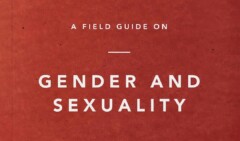Take a look at this graphic. Image that the middle box in the chart is your house and the boxes that surround it are the eight houses closest to your own. I doubt your neighborhood is arranged like a tic-tac-toe board, so you may need to use your imagination just a little bit.
Here’s what I want you to do.
- First, write the names of the people who live in the house represented by each of the boxes. If you can give both first and last names, that’s great. If you’ve only got first names, that’s okay too.
- Second, write down some information or facts about each of the people in that house. I don’t mean facts that you could observe by standing on the road and looking at their house (“Drives a red car”) but facts that you’ve gathered from speaking to them (“Works for a bank,” “Grew up across town.”).
- Third, write down any in-depth information you know about each of the people. This could include details like their career plans or religious beliefs–the kind of information that comes from real conversation.
How did you do? Or how do you think you would do if you actually went through with this exercise? The degree to which you simply do not know your neighbors is the degree to which you will benefit from reading The Art of Neighboring by Jay Pathak and Dave Runyon. They premise their book upon this simple question: When Jesus told us love our neighbors, what if he meant our actual neighbors, the people who live closest to us? They explain that Christians have long been making “neighbor” into a safe metaphor that allows us to believe we are carrying out the Lord’s command when we visit soup kitchens and do acts of kindness to complete strangers.
The problem, as they explain it, is that “when we aim for everything, we hit nothing. So when we insist we’re neighbors with everybody, often we end up being neighbors with nobody.” Ouch. Much like the Pharisees, we ask “Who is my neighbor?” in the hope of finding a loophole, not in the hope of loving those who live nearby. “Jesus assumed that his audience would be able to love those nearest to them, their literal neighbors, the people most like them, who shared the same heritage and geography. In telling the parable, Jesus was stretching their concept of neighbor to include even people from a group they didn’t like.” As we read the parable today we tend to go straight to the stranger on the side of the road and no longer include the person in the house next door.
This book is full of biblical counsel and simple wisdom about how to be a good neighbor. Perhaps the most freeing concept is that there is inherent value in being a good neighbor, even if your neighbor never becomes a Christian. The authors helpfully distinguish between ultimate motives and ulterior motives. The ultimate motive in engaging your neighbors is to share the gospel with them and to see them turn to the Lord, but we must never do this through ulterior motives. Too many Christians use engaging their neighbors as a thinly-veiled guise to try to “win them,” and give up when the neighbors do not respond positively. Pathak and Runyon say, “The ‘agenda’ we need to drop is the well-meaning tendency to be friends with people for the sole purpose of converting them to our faith. Many so desperately want to move people forward spiritually that they push them according to their timetable, not according to how God is working in them. It’s tempting to offer friendship with strings attached.”
They clarify: “Sharing the story of Jesus and his impact on our lives is the right motive, but it canot be an ulterior motive in developing relationships. We don’t love our neighbors to convert them; we love our neighbors because we are converted.” Christians have long been taught that we should do good things solely to have a spiritual conversation that can move people toward conversion; but Jesus never called us to use a bait-and-switch approach where we are friends only so we can share the gospel. “We are called to love our neighbors unconditionally, without expecting anything in return.”
The Art of Neighboring clearly comes from a little bit outside the theological “tribe” that I identify with, and that brings both benefits and drawbacks. The book is not without its weaknesses. I would have liked to see the authors wrestle a bit more with issues related to sharing the gospel and creative ways of doing that. I would have liked to see them focus more on the role of the local church in the life of the Christian. But those weaknesses are more than compensated for with their call to be good neighbors and the challenge they offer.
This is a book I learned from, a book that was of immediate benefit to me, and, I think, exactly the book I needed to read. We live in a closely-packed neighborhood where we know and are known (at last count at least four of our neighbors have a key to our house!) but I needed to be freed to simply love my neighbors, to be a good neighbor to them, without feeling guilt for not always offering gospel sneak-attacks where I work it into every conversation. There is value in being a good neighbor and as we neighbor well, we trust that very natural gospel opportunities will arise.










